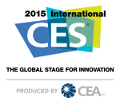Market Intelligence – The connected home is one of the hottest topics being discussed today, and with CES 2015 taking place next month in Las Vegas, new innovations are sure to be on display.
Although the drive to create a smarter and more efficient home increases daily, driven by mobile devices interacting with numerous connected objects and devices, Hendrik Bartel, research director at Gartner, said connected home devices currently only appeal to a niche section of the high-income market.
Connected home devices include home automation devices such as smart thermostats and wifi-enabled lightbulbs, home monitoring devices such as a connected security camera that broadcasts to a person’s device and home security devices such as a security camera that connects to a central monitoring station.
Mr. Bartel provided his thoughts on what to expect from the connected home market, including which segments show promise for strong growth in the near future. .
Q: Over the past couple of years we have seen numerous connected home devices arrive on the market. However, the reality is that this is currently a nascent market and companies are struggling with how to popularize their products and the associated benefits. With so much innovation in the market, why has it not taken off and what needs to be done to spur more growth?
A: Gartner’s recent survey of 6,500 consumers in the U.S. and Germany showed 16 percent of U.S. online households own a connected home device, whereas Germany has less than 10 percent of online households with a connected home device. An additional 4 percent of U.S. participants reported owning at least two or more devices which makes the total number of online households with one or multiple home automation devices is less than 25 million households in the U.S.Ownership of multiple connected home devices within a household in Germany is even less popular, where the results indicate that only 3 percent of respondents report owning two or more connected home devices.
One theory behind these numbers is that the current generation of devices is perceived as adding very little value beyond simply being a “gimmick.” Perhaps the first attempt has fallen flat in terms of promoting the value of enhanced energy savings or automation of repetitive tasks, as it would appear to be unable to convince the larger market to take advantage of the connected home.
Promoting a higher perceived value of connected home devices is necessary for additional growth. The current value propositions are too vague and not enticing enough to capture the small segment of high earners to achieve broader market penetration. Another option is to offer discounts for purchasing multiple devices. This would have the added benefit of gaining customer loyalty as well as getting more devices into the household. It’s also imperative to ensure that the home automation device offered easily integrates with existing controller devices (smartphone, tablet, laptop, etc) and any other connected home devices already installed in the home.
Q: What type of consumer is purchasing connected home devices and which devices are they purchasing?
A: Our survey showed that the majority of current spending on connected home devices and services in the U.S. comes from high-disposable-income connected households. The bulk of that spending has been on devices and services relating to security, such as alarm systems and services.
Almost 80 percent of those surveyed (with high income) have at least one connected home device installed or service provided. Less than 20 percent of connected households with high income actually spent money on more advanced connected home devices, such as remote activation of smart products, including lighting, temperature control, electrical appliances like washing machines, or open/close functionality of their front door.
Aside from alarm systems, all other home automation devices and services have barely reached single-digit percentage penetration into medium and low-income online households in the U.S.
Q: Consumers are looking to devices that have a strong practical value proposition, such as smart electrical sockets and wall switches that enable them to be controlled remotely. What new innovations in the connected home market will we be hearing about during CES?
A: I think we will see the trend of more household/standard brands in the connected home space. This will be huge step towards democratization of such services and devices. Certainly Apple HomeKit will bear the first fruits, and we should see products taking advantage of deep iOS integration at CES 2015. I am also really hoping for new innovative ways to control existing connected home devices.

